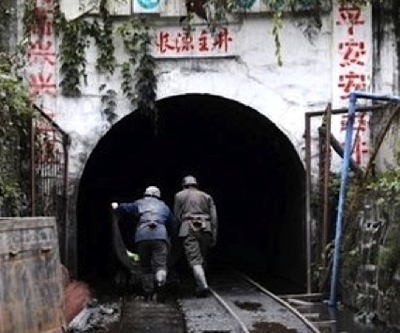
China burns almost as much coal as the rest of the world combined and is reliant on the fossil fuel for two-thirds of total energy consumption and 80% of its electricity generation.
Since 2000 the country was responsible for more than 80% of global growth in coal usage. Already high coal consumption and production rates in the country were recently revised upwards according to data from the US Energy Information Administration (EIA).
2013 was the 14th consecutive year of rising thermal coal consumption, output and imports for the country – albeit at a slower pace – but 2014 turned out to be a turning point.
In 2014, energy-content-based coal consumption was essentially flat, and production declined by 2.6% despite overall economic growth of more than 7% as Beijing tackles the country’s serious pollution problems.
As a result of these measures Chinese coal imports have been steadily declining and last year fell to the lowest level since 2012. So far this year imports are down another 28%.
China on Friday announced that it will be launching a long anticipated national carbon cap-and-trade scheme in 2017 in addition to seven regional schemes already in place, creating the largest emissions market in the world.
The plan which covers coal-burning power plants and heavy industry is set to drive down consumption and production inside the country further and in the process drag down the price of steam coal.
While low quality coal from Indonesia will be hardest hit with imports from the Asian nation is already down 45% this year, the outlook for benchmark seaborne coal has also turned more bearish. Benchmark Australian Newcastle export coal has fallen from $70 a tonne a year go to below $60 a tonne with a move to $50 a tonne before the end of the year not unlikely.
That’s more bad news for the the US coal industry already reeling from depressed domestic prices. Struggling to compete with cheap natural gas at home US coal minersturned to exports to take up some of the slack in the domestic market. From less than 5 million tons of steam coal exports in the first quarter of 2009, shipment rose to 17.4 million tons by the second quarter of 2012.
But cargoes have been declining since then with first quarter exports this year less than half the peak three years ago. Over the same period coking coal exports are down nearly a third.
The US commanded less than 1% of the 890 million tonnes seaborne thermal coal trade in 2014. Global thermal coal exports are expected to decline to 844 million tonnes this year.
There is one bright spot amid all the doom and gloom for coal. While Chinese imports for 2015 are expected decline by almost a third to 115 million tonnes from 2014, Indian imports for the current year are expected to rise 10% to just under 173.8 million tonnes this year reports Platts.
A recent study by independent commodity research house CRU show India’s domestic demand in 2014 equalled around 80% of the global seaborne market.
That means that “small changes in supply and demand can have a relatively large impact on total import requirements” and “even if domestic coal production was to increase, there would still be issues getting the coal to market due to logistical bottlenecks.”
India’s electricity consumption is set to grow by nearly half over the next five years and while the subcontinent’s domestic production is rising it won’t be able to keep up with the growth in demand.
According to CRU India will requiring an additional 136 million tonnes of imports by 2019. The majority of this import growth is expected to materialise over the next three years as significant coal-fired capacity comes on stream, and CRU expects India to replace China as the world’s largest import market by 2015-2016.

Source: EIA
Comments
brettles
so the cycle continues